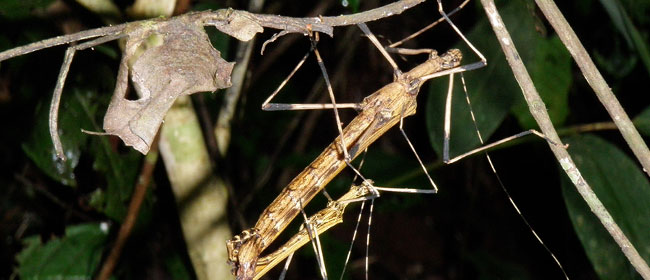How can you love the world if you are protecting just your corner. The world is pretty large but as much as we look to affect our portion other corners need our help.
A while ago myself (Terry – your eco friend) and my husband Mark spent some time in Peru’s Amazon. We went with the help of G Adventures (formally Gap). If you have an interest in a truly enlightening and educational vacation, here is a link: G Adventures, Project Peru Amazon.
The first part of the tour involved 3 days in the in the Tambopata National Forest where we stayed in the Tambopata Research Center. We had an amazing guide a guide who helped us learn about the forest itself and how it affects the lives of the Peruvian people.
The Tambopata Research Center is a comfortable 18 bedroom lodge situated by one of the world’s largest Macaw Claylicks on the uninhabited frontier of the Tambopata National Reserve and the Bahuaja-Sonene National Park.
It was established to aid the protection of these magnificent birds and has a long-term research project to ensure the survival of their populations. It is unrivalled in its access to pristine Amazonian forests, having no neighbours, and due to its distance from human populations requires a stopover in Refugio Amazonas.
Refugio Amazonas is built on a 200 hectare private reserve on the buffer zone of the Tambopata National Reserve. It is becoming integrated to the communities of Brazil nut extractors that surround it, attempting to extend the benefits of ecotourism to the families that commit to the sustainable use of the forest within this buffer zone.
Refugio Amazonas has no electricity. Light is provided by numerous kerosene lamps and candles. A generator is turned on once a day to recharge batteries for guests or lodge facilities. At night it is very dark, so we recommend good flashlights.
Nature is our passion, people our commitment.
Rainforest Expeditions builds sanctuaries that host unique experiences, engage local communities, and help hosts and guests learn to value their relation with the Earth.
Rainforest Expeditions (est. 1989) operates three award-winning Amazon lodges: Posada Amazonas, Refugio Amazonas, and Tambopata Research Center. Each Amazon lodge provides access to a unique set of ecotourism experiences in the jungle of southeastern Peru. We offer a true ecotourism experience by working closely with the Ese’ eja Native Community to generate sustainable local development while caring for the environment. Visitors to our lodges are completely surrounded by nature due to our location in the Tambopata-Candamo National Reserve. Rooms constructed from bamboo and adobe give visitors a unique experience in the jungle without sacrificing comfort and quality. All of these factors combined have earned us numerous awards including the Ecotourism Excellence Award and certification by the Rainforest Alliance.
Our local guide truly loved the forest, the local animals and respected the importance of traditional medicinal plants and people. He truly loved teaching about the forest and conservation to others. He is one of the locals trained to provide others education on this amazing part of the world.
Aside from showing us his rainforest wonder he educated us in some of the atrocities happening in this most important area of the world.
About the Tambopata
Fauna Forever Tambopata (FFT) is the flagship environmental research and monitoring project of Association Fauna Forever; a Peruvian not-for-profit organisation that manages a network of research and conservation projects, as well as training courses and workshops.
This is from the Fauna Forever site (photographs are mine):
With 100,000 people, Madre de Dios is the least populated, least developed area of Peru, and 90% of its forests are still intact. However, a number of increasingly visual threats are currently endangering these forests and their wildlife, including:
- Timber extraction;
- Alluvial gold-mining;
- Unsustainable farming practices, like cattle ranching;
- Inappropriate, over-ambiguous or unregulated natural resource extraction laws;
- Oil and gas prospecting;
- Land speculation; and lastly
- Poorly regulated tourism development, particularly in and around protected areas where lodges tend to congregate.
Understanding the magnitude of these threats on the forests and wildlife populations, and importantly the mechanisms (economic, political, sociocultural) that underpin the threats is also vital if we are to provide meaningful recommendations and actions that if implemented would have a high potential of success.
- There are more ant species on a single large tree in the Amazon than in the whole of the British Isles.
- An intact hectare of forest puts on carbon (like humans put on weight) at a rate of 1.2 tonnes per year, sucking up a total of 440 Million tonnes of CO2 per year across the entire Amazon.
- The Amazon contains 70 Billion tonnes of carbon, that’s more than 10 years worth of global, human-induced carbon dioxide emissions. (Humans generate around 6.2 billion tonnes of CO2 per year at present).
- A typical hectare of forest in the Amazon has 350 tonnes of biomass (living matter) of which 175 tonnes is carbon.
- The deforestation belt either side of roads in the Amazon, 30 years after construction, is 8 km for unpaved roads and 40 km for paved roads.
- The forgotten corners of the Amazon still house thousands of uncontacted native indigenous people.
Protecting Peru’s Amazon Rainforest
In our tour we saw a rig extracting gold from the local river. The problem with this is that they use Mercury to extract the gold and thereby pollute the rivers. The government is attempting to control this but they are not always successful.
Here is some information from Discover Peru:
Today many factors threaten the Peruvian rainforest. Overfishing and dam-building threaten the Amazon River and its ecosystem. Deforestation to clear land for mining, road building and agriculture destroys the habitat of plants and animals that live in the rain forest; it also contributes to the erosion of the soil creating mudslides.
Deforestation also contributes to global warming, about 50% of Peru’s carbon emissions is due to deforestation. Trees absorb carbon dioxide through their leaves, as there are fewer trees carbon dioxide and other greenhouse gases trap the sun’s heat close to the atmosphere contributing to the gradual increase in the Earth’s temperature.
Mercury is a silver poisonous metallic liquid used in the extraction of minerals that pollute the rivers in the rain forest. Mercury enters the food chain through microorganisms eaten by fish, as people eat fish they can become sick. The Peruvian government along with conservation agencies has set up a system of national parks and reserves to save Peru’s ecosystems and biodiversity. Manu National Park, Tambopata National Reserve and Bahuaja-Sonene National Park are some examples of the effort to protect the fauna and flora of the Amazon region. Environmental organizations are working with local indigenous people and logging companies to protect trees, cutting only a few in small areas and not cutting vast areas of forest. Local Indians are also campaigning to protect areas that traditionally belong to them, preventing companies from setting operations in their land.
Helping the local people
As members of a developed world we try to stop the local people from destroying the Amazon, but it is not exactly congruent with their ability to make a decent living and take care of their families. We have to help the local people from being taken advantage of. They need their rights looked after.
The Rainforest Foundation US works in partnership with indigenous groups and local grassroots organizations in Central and South America to secure rights to their lands, influence laws and policies to protect their resources, and build strong community leadership. We provide project-related grants and direct technical assistance to our partners.
Where you can donate:
Rain Tree has links to several organizations working to help the people and the rainforests Their link is here: http://www.rain-tree.com/links.htm











